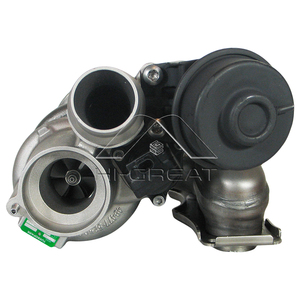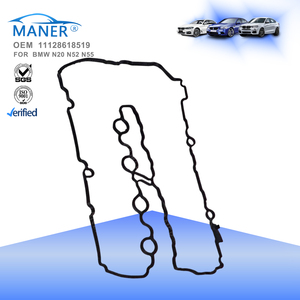(129 products available)




























































































































































































The B20A engine is a type of internal combustion engine found in vehicles. It is part of the B-series of engines developed by Honda. The B20A engine has a displacement of 2.0 liters and is designed for use in larger vehicles, such as SUVs and trucks. Due to its size and design, the B20A engine can produce more power and torque than smaller engines, making it suitable for heavy-duty applications.
The B20A engine is a bit older and not as commonly used as other B-series engines. However, it is still a reliable and good-performing engine for larger vehicles. Here are the two main types of B20A engines:
B20A1 Engine
The B20A1 engine was introduced in 1989. It is a 2.0-liter inline-four engine with DOHC (Dual Overhead Camshafts) and 16 valves. The B20A1 engine produces 130 horsepower at 6,500 RPM and 133 lb-ft of torque at 5,000 RPM. The B20A1 engine was used in the Honda Accord and Prelude models.
B20A Engine
The B20A engine was introduced in 1991. It is also a 2.0-liter inline-four engine, but it has a slightly different design. The B20A engine has a larger bore and stroke than the B20A1 engine. This allows the B20A engine to produce more power and torque. The B20A engine produces 145 horsepower at 6,600 RPM and 150 lb-ft of torque at 4,800 RPM. The B20A engine was used in the Honda CR-V and Element models.
Engine type:
The Honda B20A engine is a four-cylinder, four-stroke gasoline internal combustion engine (petrol).
Engine configuration:
Honda B20A engine is in-line.
Number of cylinders:
The B20A engine has 4 cylinders.
Valves per cylinder:
Each cylinder in the B20A engine has 4 valves, making a total of 16 valves.
Valve configuration:
Honda B20A engine has DOHC (Dual Overhead Camshafts) valve configuration.
Displacement:
The engine has a displacement of 1997 cm3 (cubic centimeters), equivalent to 121.9 in3 (cubic inches).
Bore stroke:
The B20A engine has a bore diameter of 85 mm (3.35 inches) and a stroke length of 89 mm (3.50 inches).
Compression ratio:
The compression ratio of the B20A engine is between 9.5:1 to 10.5:1, depending on the specific variant of the engine.
Firing order:
The B20A engine has a firing order of 1-3-4-2.
Here are some general maintenance tips for the B20A engine
Regular oil changes:
Engine oil lubricates the moving parts of the engine, reducing friction and wear. It is important to change the engine oil regularly to ensure the B20A engine runs smoothly. The recommended interval for changing the Honda B20A engine oil is every 5,000 to 7,500 miles or every six months, whichever comes first. Before changing the oil, run the engine for a few minutes to warm it up. The oil will be thinner and easier to drain. Use a high-quality oil filter when changing the engine oil. Replace the oil filter every time the engine oil is changed. The new oil filter will trap contaminants and ensure only clean oil circulates through the engine. Dispose of the old oil and oil filter properly. Take them to a recycling center that accepts used oil and filters.
Regularly check and replace air filters:
The air filter prevents dust and debris from entering the engine. A clogged air filter reduces airflow and makes the engine work harder. Check the air filter every 15,000 miles or 12 months, whichever comes first. Take the air filter out of the engine compartment and inspect it for dirt. Hold it up to the light. If it looks dirty or opaque, clean it or replace it. A new air filter will improve engine performance and fuel efficiency. Clean the air filter by tapping it against a hard surface to remove loose dirt. Do not use water or cleaning chemicals, as these can damage the filter material. It is best to replace the entire air filter if it is extremely dirty or damaged. Use only genuine Honda replacement parts to ensure proper fit and function.
Regularly inspect and replace spark plugs:
The spark plug ignites the fuel-air mixture in the engine cylinders. Worn or faulty spark plugs can cause misfires and reduce engine power. Check the spark plugs every 30,000 miles or every three years, whichever comes first. Remove the spark plugs one by one and inspect them for signs of wear or damage. Look for cracks, discoloration, or excessive gap between the electrodes. Use a spark plug gap gauge to check the gap. It should be within the manufacturer's specifications. Clean the spark plugs with a wire brush or spark plug cleaner. A new spark plug will restore optimal ignition performance. Replace the spark plugs every 60,000 to 100,000 miles, depending on the type used in the B20A engine. Use only Honda-approved spark plugs to ensure compatibility and reliability.
Choosing the right B20A engine for business needs requires an understanding of the B20A engine specifications. Here are some of the considerations when choosing the B20A engine:
Before replacing a B20A engine, it's important to know the tools required and the step-by-step process. With the right tools, engine replacement can be done as a DIY project. The tools needed are:
The process of replacing the B20A engine is as follows:
Preparation
Disconnect the car's battery. Go through the car's service manual and get information about the engine replacement process. Locate and drain the engine's fluids. Fluids to drain include oil, coolant, and fuel.
Disassembly
Remove all the parts connected to the engine. Disconnect the intake and exhaust systems, electrical connections, and cooling systems. Remove the engine's accessories, including the alternator, power steering pump, and air conditioning compressor. Disconnect the transmission from the engine and remove the engine's mounting bolts. Use a jack and engine hoist to lift the engine out of the bay.
Installation
Put the new engine onto the engine hoist and lower it into the bay. Secure the engine using mounting bolts and then connect it to the transmission. Reinstall all the engine accessories and connect the engine's electrical system. Reconnect the intake and exhaust systems and the cooling system.
Final steps
Refill the engine's fluids. Conduct a thorough inspection to ensure all parts have been reinstalled and there are no leaks. Start the engine and conduct a test drive to ensure everything is working. Go through the engine's manual and perform all the final engine maintenance procedures.
Q: What is the B20a engine?
A: The B20a engine is a part of the B-series family of engines made by the Japanese company Honda Motor. This engine is a 4-cylinder, 16-valve, and inline dual overhead cam (DOHC) gas engine.
Q: What is the B20a1 engine?
A: The B20a1 engine is a variant of the B20a engine. While all other aspects of the B20a engine are the same as the B20a1 engine, the B20a1 engine uses a PGM-FI fuel system with 4 0-240cc throttle body (TB) injectors.
Q: What is the B20a2 engine?
A: The B20a2 engine is another variant of the B20a engine. While all other aspects of the B20a engine are the same as the B20a2 engine, the B20a2 engine uses a PGM-FI fuel system with 4 0-200cc throttle body (TB) injectors.
Q: What are some common problems with the B20a engine?
A: There are no serious complaints or issues reported with the B20a engine. However, some users have reported minor problems related to the fuel system and engine ignition.